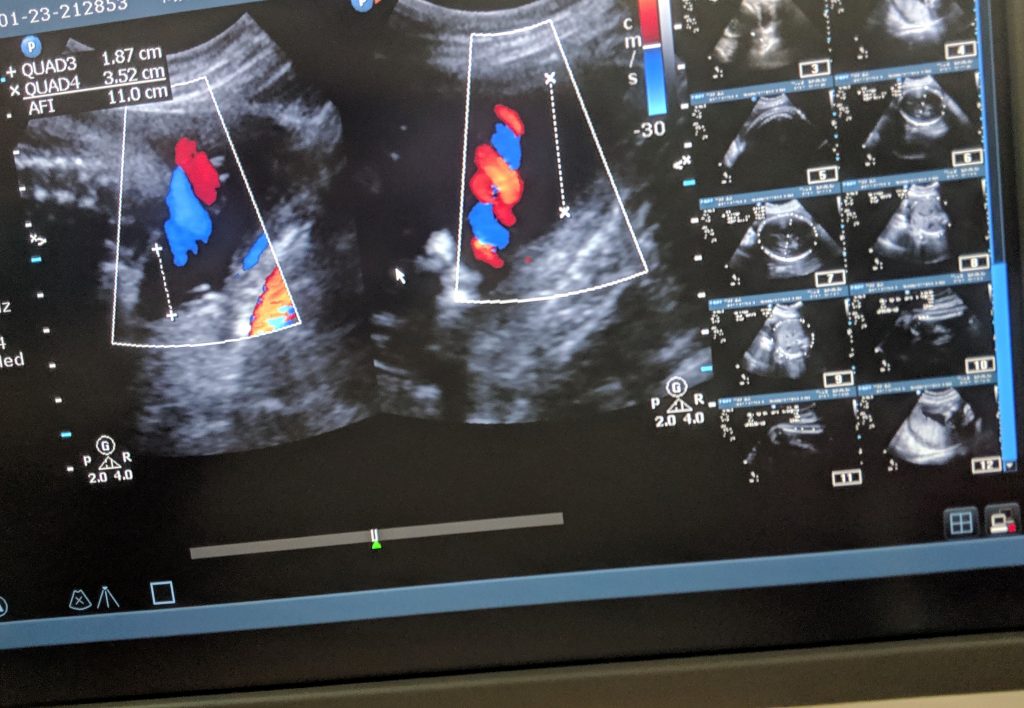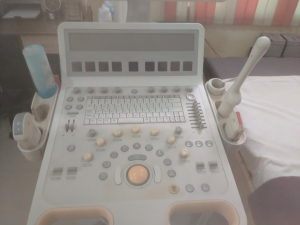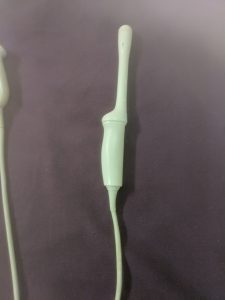
Ultrasound tests during pregnancy are interesting since one gets to see at least a silhouette of the baby in some way. Normally there are at least two ultrasound tests done during the course of pregnancy.
- First in the first trimester around 12 weeks and
- Second one in the second trimester between 18-22 weeks
What are the various ultrasound tests commonly done during pregnancy and their purpose?
Routine Pregnancy ultrasound investigation – 2D/ 3D or 4D?
The first ultrasound investigation is usually done between 11-13 weeks of pregnancy,
- To check if there may be one or more fetuses.
- To more accurately assess baby’s gestational age and estimated due date.
- To confirm there is fetal heartbeat
- Check position of placenta – it is in uterus (and not ectopic or tubular pregnancy).
- Baby’s anatomy development and general health appropriate for that stage – if the skull, limbs, organs, and umbilical cord are developing as expected.
In the second trimester, in the middle of the pregnancy, usually between week 18 and week 22, a detailed anatomy scan is done. This ultrasound is more interesting for parents since the fetus is relatively more developed and looks like a baby in 3D/4D scans. A clearer picture is visible of all body parts and organs. The purpose of this test is to:
- Assess baby’s development appropriate for that stage, by measuring the size of the baby and checking all the major organs, measuring the level of amniotic fluid and looking at the location of placenta again.
For routine ultrasound cases a 2D ultrasound is more than sufficient, as the purpose is to basically assess anatomical development, by measuring size, assessing position etc. Sometimes a closer examination may be medically necessary, if there is any suspected anomaly. 3D/4D ultrasounds may prove to be more useful in few such cases. In most cases though, nowadays 3D/ 4D ultrasounds are popular among obstetricians and young parents, as they enable keepsake pictures or videos of their baby.

Additional ultrasounds over the course of pregnancy may be necessary for various reasons such as:
- Routine ultrasound as detailed above, indicates some anomaly requiring further investigations
- Pregnancy is considered high-risk
- Carrying twins or multiples
- Risk of changes in the cervix (thinning, opening or shortening) or risk of pre-term labour
- There is spotting etc.
Advanced ultrasound tests in Obstetrics to know about
Nuchal Translucency Screening
One of the investigations done during routine ultrasound exam is – fluid at the base of fetuses neck — a spot known as the nuchal fold. Fetuses with increased fluid at the base of their necks may have a chromosomal problem such as Down syndrome. If any such anomaly is suspected during routine exam, a nuchal translucency screening, or NT screening, a specialized routine ultrasound may be recommended and performed between week 11-13 of pregnancy, i.e during the first trimester ultrasound test.
Depending on nuchal fold thickness, mother’s age and baby’s gestational age – probability of a chromosomal abnormality is calculated automatically in the software provided in the sonography machine. Nuchal translucency is a screening test, which means the results are not conclusive, it can’t give you a definitive diagnosis. But it helps with statistical likelihood and helps decide whether to undergo further diagnostic testing such as specialized blood test to offer more insight into the relative odds of your baby being born with a genetic disorder.
Because NT screening has a relatively high rate of error on its own (accuracy rate is 70-75%), a combined screening is recommended, where NT ultrasound results are combined with one or two blood tests that measure and compare levels of hCG and PAPP-A (pregnancy associated plasma protein A). These are two hormones produced by the fetus and passed into mother’s bloodstream.
The advantage of Nuchal Translucency Test and the combined screening through blood tests, is that they are completely non-invasive and help with early stage detection.
Chorionic Villus Sampling (CVS)
If NT test results throw up high probability of a genetic disorder being present a Chorionic Villus Sampling or (CVS) may be immediately done to rule out/ confirm chromosomal disorders. CVS is usually done between 11-13 weeks (first trimester).
The CVS involves taking a small tissue sample from a small projection of the placenta, called the chorionic villi, as this sample contains the same genetic information as the baby.
To collect the sample a very thin tube is inserted up the vagina and into the cervix. The tube is guided up to the placenta, using ultrasound images, so that gestational age of fetus is reconfirmed, position of placenta is accurately assessed and sample is removed safely.
Advantage of CVS is that it is a diagnostic test that can be done in the early stage of pregnancy and the mother can take a decision on termination relatively safely. Disadvantage is that, while it can test clearly for several problems, including Down syndrome (trisomy 21), trisomy 13, trisomy 18, triploidy, Tay-Sachs, sickle cell anemia and cystic fibrosis, it cannot, test for neural tube and other anatomical defects.
Amniocentesis
Amniocentesis is another conclusive/ diagnostic test for genetic disorders. Amniocentesis can be done if the results of a screening test (NT and related blood tests) turn out abnormal but the pregnancy is already over 13 weeks and CVS was missed/ opted out (the window for CVS is 11-13 weeks).
Amniocentesis can be done between 16-20 weeks of pregnancy. The advantage of Amniocentesis is that it can check for several hundred genetic diseases, including those detectable by CVS and more. Amniocentesis can also rule out neural tube defects and some (but not all) anatomical abnormality.
An ultrasound is used to locate the position of the amniotic sac along with the fetus and placenta. A long, thin, hollow needle is inserted into mother’s abdomen and uterus, into the fluid-filled amniotic sac to withdraw a little sample. Amniotic fluid is soon replaced by the body, but location of fetus and placenta is also watched so as to not touch them while withdrawing the sample.
As against Nuchal Translucency test, which is non-invasive – both Amniocentesis and CVS are invasive procedures to the extent detailed above and are ultrasound-guided for safety. In case of suspect ed abnormality the gynecologist may advice trans-vaginal ultrasound for a closer look. For this purpose a TVS probe is used.
ed abnormality the gynecologist may advice trans-vaginal ultrasound for a closer look. For this purpose a TVS probe is used.
Ultrasound tests may be done additionally after the second trimester any time before delivery to keep a closer watch on fetal health. More frequent checks may be done, if there are multiples, or the mother has high-blood pressure or diabetes or other complications. This helps in deciding whether to induce early labour or not. These checks include fetal breathing, fetal heart rate, fetal movements or amount of amniotic fluid surrounding the baby.
While most ultrasound machines including entry level shared-service ultrasound machines have capability to do routine pregnancy ultrasound tests, they may not have feature to perform NT screening and other advanced tests. However, ultrasound machines dedicated for Obstetrics/ women’s health such as GE Voluson series even at the entry level e.g GE Voluson P6 or P8 support Auto NT screening, Fetal Echo, Free hand 3D. Advanced systems even provide for HD (High-Defnition) Live images and videos, Spatio-temporal image correlation (STIC) – an advanced approach for clinical assessment of the fetal heart, Auto follicle 2D/3D measurement etc.
PrimedeQ is an eMarketplace for medical equipment. We offer all types of imaging equipment including used / refurbished GE ultrasound machines and other used ultrasound machines from Philips and Seimens. We also assist in ultrasound machine repair and probe repair & maintenance services at www.Primedeq.com. Contact us at +918971223957 or +917019759765 for all your medical equipment related needs.
https://in.linkedin.com/in/shanthi-mathur-ab07838
